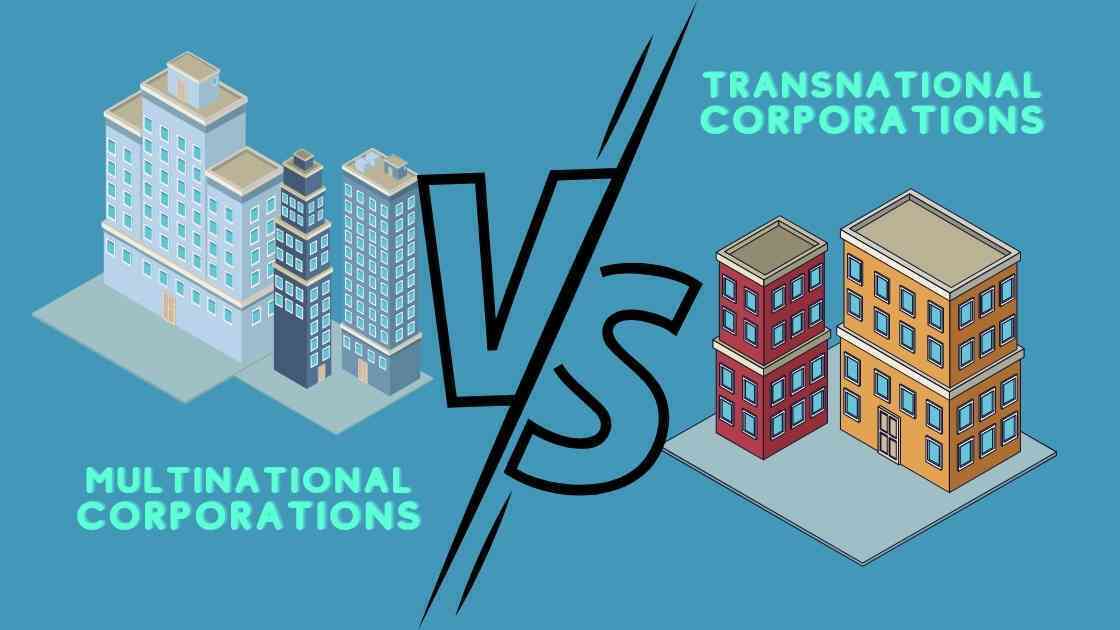Multinational and Transnational corporations have become increasingly important in the global economy. Multinational corporations and Transnational corporations are two different types of company that have a lot of similarities, but they also have some different features.
This article offers an overview of the two types of corporations, explaining their key similarities and differences.
Introduction
A Multinational corporation (MNC) is a type of company that operates in multiple countries with a centralized management at the headquarters at the home country.
Whereas, Transnational corporation also operates globally but without a centralized system, means each firm in respective country have its own management which is the decision making body.
For example, McDonald’s is an example of a Transnational company and Coca-Cola is an example of Multinational company, both operates globally but one does not have a centralized system and other has centralized system of management.
Key Similarities Between Multinational and Transnational Corporations
Multinational and Transnational corporations share some key similarities, such as their ability to operate in multiple countries around the world. However, there are also other important similarities between Multinational corporations and Transnational corporations:
- Multinational Corporations have operations in more than one country. Transnational corporations also have operations in more than one country, but typically focus on a single market.
- Multinational corporations and Transnational corporations are highly complex organizations with a wide range of activities. They operate in many countries around the world and employ a large number of people.
- Both Multinational corporations and Transnational corporations often have distinctive brands that help them to stand out from their competitors. They may also have strong international networks that enable them to share best practices and collaborate on projects.
- Multinational corporations and Transnational corporations can be powerful drivers of economic growth. They can contribute significantly to innovation, competitiveness, and job creation.
What is the Difference Between Multinational and Transnational Corporations
Multinational and Transnational corporations are two different types of businesses. Here’s a quick overview of the main differences:
- Size: A Multinational corporation is typically larger because it has subsidiary firm in other countries. However, A Transnational corporation does not have subsidiary firm.
- Focus: A Multinational corporation typically has a broad focus, such as manufacturing or finance. A Transnational corporation may have a narrower focus, which is regarding a particular market in a country or region.
- Headquarters: The headquarters of a Multinational corporation are usually located in a major home country, while the headquarters of a Transnational corporation may be located in multiple countries.
- Internal structure: A Multinational corporation typically has a number of business divisions, each of which is responsible for an individual product line, service line or part of the overall business. A Transnational corporation may have fewer divisions, but each division will be focused on a particular market.
- Research and Development: Multinational corporation does R&D at the home country and then distribute the product to the other countries they have their subsidiary firms. However, in case of Transnational corporation the R&D happens in the each firm of the country, which helps them be more focused on a regional market.
- Product focus: Multinational corporations often produce goods and services that can be used in several different markets. A Transnational corporation may only produce goods or services that can be sold in a specific market, such as cotton products, snacks, etc.
- Decision Making: Multinational corporations have a centralized management at the home country due to which it takes time to make a decision. However, as the Transnational corporations does not have a centralized management, then the management of the firm in particular country can make the decisions which is faster and more effective the multinationals.
Conclusion
Multinational and Transnational corporations are businesses that span multiple countries or regions. They often have a broader reach than traditional companies, with operations in more than one country.
This can give both corporations an edge over their domestic competition, as they can tap into new markets and develop relationships with customers and suppliers in different parts of the world.
Hopefully, this will help you understand why these organizations are so important and how best to work with them in your business ventures.




